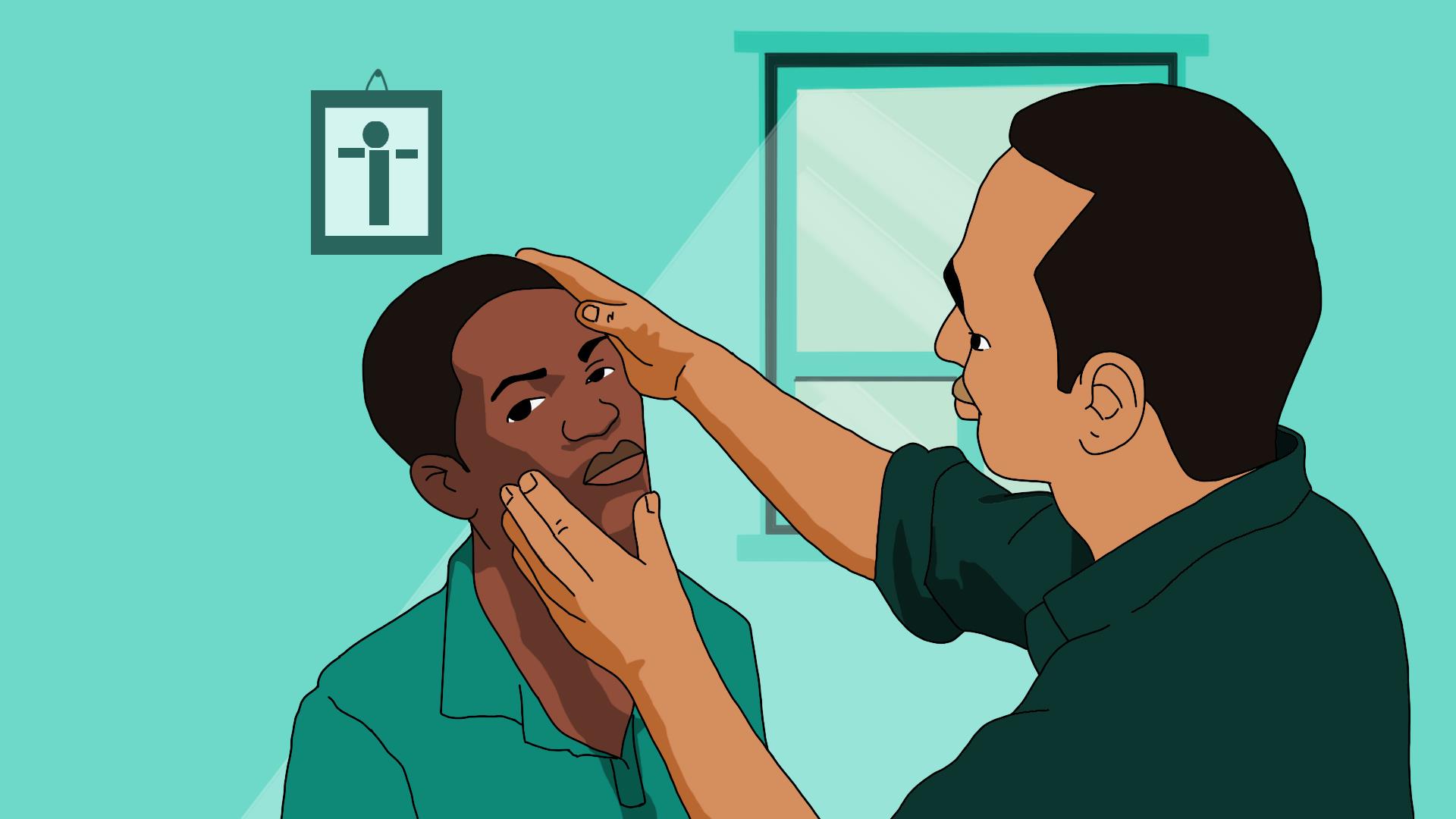🎧 Listen to: Onchocerciasis

Onchocerciasis
What is onchocerciasis (river blindness)?
Onchocerciasis, commonly known as river blindness, is a serious disease that affects the skin and eyes. It is caused by a parasitic worm called Onchocerca volvulus, which is spread to humans through the bites of infected blackflies. These blackflies breed in fastflowing rivers and streams, which is why the disease is called river blindness.
How common is onchocerciasis in Africa?
Onchocerciasis is a major public health problem in Africa. About 99% of cases worldwide occur in Africa, especially in west, central, and east African countries like Ghana, Nigeria, the Democratic Republic of Congo, and Uganda. According to the world health organization (WHO), more than 20 million people in Africa are infected, and around 1 million suffer from blindness or severe vision loss due to the disease.
Who is at risk of getting onchocerciasis?
People who live or work near rivers and streams in rural Africa are at the highest risk. Those who are most vulnerable include:
- Farmers and fishermen who work near rivers
- Children and adults who bathe in or fetch water from rivers
- Rural communities in high-risk areas
- Volunteers, health workers, and missionaries working in endemic regions
Casual travelers are rarely affected because multiple bites over time are needed for infection.
How does someone get onchocerciasis?
The disease is spread through the bite of an infected blackfly. Here’s how it happens:
- A blackfly carrying the Onchocerca volvulus larvae bites a person.
- The larvae enter the person’s skin and grow into adult worms in 6 to 12 months.
- These adult worms produce thousands of tiny worms (microfilariae) that spread throughout the skin and eyes.
- When another blackfly bites the infected person, it picks up the tiny worms and spreads them to the next person.
What are the symptoms of onchocerciasis?
The symptoms of river blindness develop slowly and can range from mild to severe. Some of the most common symptoms include:
Skin symptoms
- Severe itching and rashes, leading to scratching and wounds
- Nodules (small bumps) under the skin, where adult worms live
- Changes in skin color (patches of light and dark areas)
- Loose, thin, or wrinkled skin (common in older patients)
Eye symptoms
- Redness and constant itching in the eyes
- Blurred vision or sensitivity to light
- Gradual loss of eyesight, leading to complete blindness
Without treatment, onchocerciasis can cause permanent blindness, making it one of the leading causes of preventable blindness in Africa.
How is onchocerciasis diagnosed?
Doctors and health workers diagnose river blindness using:
- Skin snip test: A small piece of skin is taken and examined for tiny worms.
- Mazzotti test: A drug called diethylcarbamazine (DEC) is applied to the skin. If there are tiny worms in the skin, it will cause itching.
- Eye examination: To check for worms in the eyes.
How is onchocerciasis treated?
There is no permanent cure for onchocerciasis, but the disease can be controlled with ivermectin (Mectizan), a safe and effective medicine that:
- Kills the tiny worms (microfilariae), reducing itching and preventing blindness.
- Needs to be taken once or twice a year to control the disease.
- Is distributed for free in many African countries through WHO programs.
How can onchocerciasis be prevented?
Since there is no vaccine, the best ways to prevent river blindness are:
- Avoid blackfly bites by wearing long sleeves and using insect repellent.
- Community-based drug treatment programs: Many African countries provide free ivermectin treatment in high-risk areas.
- Blackfly control programs: Spraying rivers to kill blackfly larvae.
The fight against onchocerciasis in Africa? Thanks to mass drug administration programs, many African countries have made progress in reducing river blindness. The African programme for onchocerciasis control (APOC) has helped millions of people avoid blindness by providing free ivermectin treatment in affected areas
